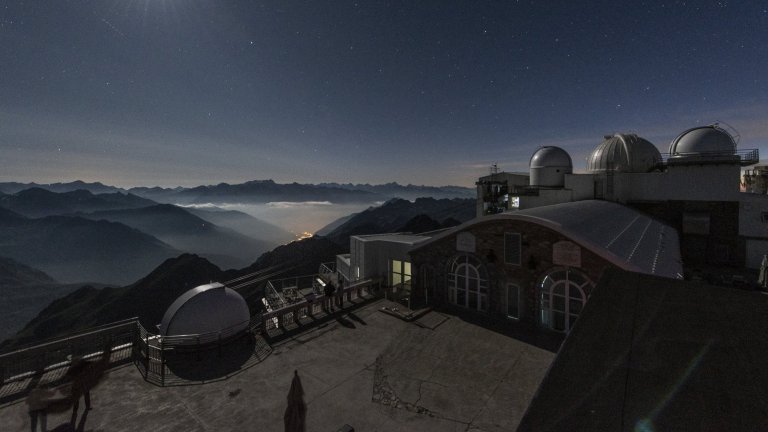
© Hubert Raguet / Laboratoire de Physique de l'ENS / Observatoire de Paris / Observatoire Midi-Pyrénées / CNRS Images
View the mediaScientific news
In France, the "Nuits des étoiles" (Starry Nights) start today. This is an opportunity to discover the latest and most powerful telescopes, which allow us to observe our Universe like never before...

© Hubert Raguet / Laboratoire de Physique de l'ENS / Observatoire de Paris / Observatoire Midi-Pyrénées / CNRS Images
View the mediaThe Nuits des étoiles 2024, running from 9 to 11 August throughout France, is organised by the French Astronomy Association and the "Origins" Priority Research Programme (PEPR) run by the CNRS. Professional astronomers join forces to pass on their passion, and they have not been standing around idle, assisted by increasingly ingenious engineers, in order to create extraordinary equipment to observe the night sky. This has led to a new generation of incredibly powerful telescopes and instruments emerging everywhere from France to Chile, pushing back the limits of the observable Universe and allowing us to explore never before seen regions.
For example, at the Pic du Midi planetology station, the recent infrared camera developed by David Darson takes new images of our solar system while using fewer resources. However, it is in Chile, where low light pollution and close proximity to the equator provide an excellent observation point, that the most ambitious telescopes have been set up in recent years. The Very Large Telescope (VLT) is one of the most widely used instruments in the world, producing more than one scientific publication per day on average. It allows us to observe galaxies at the very edge of the Universe through the Muse and Sphere instruments, produced in French laboratories, and whose incredible history we will be telling you about. Also in Chile, the LSST (Large Synoptic Survey Telescope) is preparing to map the entire Universe in 3D, to produce a 'film' that will help us understand its structure and dynamics. The objective is to learn more about dark matter and dark energy that make up 95% of the cosmos, and also to identify possible near-Earth objects, asteroids that could collide with Earth.
Once again, CNRS scientists were involved in the creation of this extraordinary tool. So we invite you to look up at the sky with us through the most incredible telescopes on our planet, and to walk among the stars...
Our work is guided by the way scientists question the world around them and we translate their research into images to help people to understand the world better and to awaken their curiosity and wonderment.